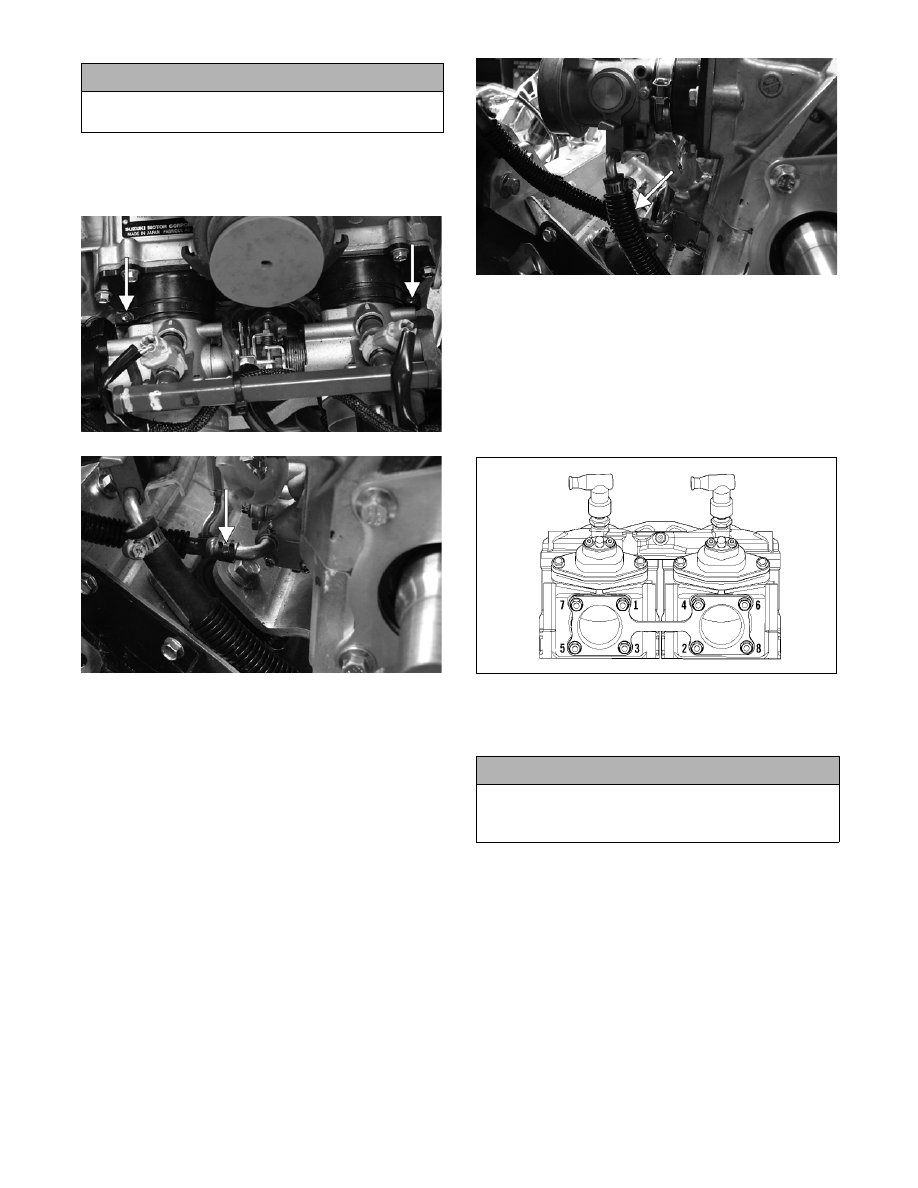Snowmobile Arctic Cat 2-Stroke (2007 year). Manual - part 47

2-174
13. Install the throttle body assembly and secure with
the flange clamps; then connect the oil pump con-
trol rod and the oil hose.
FS209A
FS179A
NOTE: Check to be sure the mark on the control
arm is aligned with alignment mark on the oil-
injection pump boss in the full-open position. If the
marks are not aligned, adjust synchronization by
loosening the jam nuts on the adjuster. Rotate the
jam nuts/adjuster nut until proper alignment is
attained. Tighten jam nuts.
NOTE: When the cable/linkage adjusting nut is
adjusted correctly, the throttle lever will move
approximately 3.2 mm (1/8 in.) before the oil-injec-
tion pump arm begins to move.
14. Remove the oil bleed plug from the oil injection
pump. When oil flows from pump free of air bub-
bles and the hose is full of oil, install the oil bleed
plug and tighten.
NOTE: It is advisable to place a cloth beneath the
oil-injection pump to contain any oil spilled during
the bleeding process.
15. Connect the two throttle body coolant hoses to the
PTO-side and MAG-side throttle body and secure
with the clamps.
FS198A
16. Apply a thin coat of high-temperature silicone
sealant to each exhaust port; then install the
exhaust gaskets.
17. Apply a thin coat of high-temperature silicone
sealant to the mating surfaces of the exhaust mani-
fold; then install the exhaust manifold and secure
with the eight nuts. Using the pattern shown,
tighten to specifications.
0742-292
18. Route the gasline hose to the throttle body assem-
bly and secure the hose to the fuel rail. Tighten the
clamp securely.
19. Connect the coolant overflow hose to the cylinder
head; then connect the spark plug wires to the
spark plugs.
NOTE: On the 800 cc, connect the knock sensor
wiring to the wiring harness; then secure the con-
nector to the coolant filler neck bracket with the
push-mount cable tie.
! CAUTION
If the bracket/starter motor lock nut was loosened for
installing purposes, tighten the lock nut securely.
! CAUTION
When installing the throttle bodies, make sure the
gasline hose is properly routed to avoid premature
wear and/or contact with exhaust components.